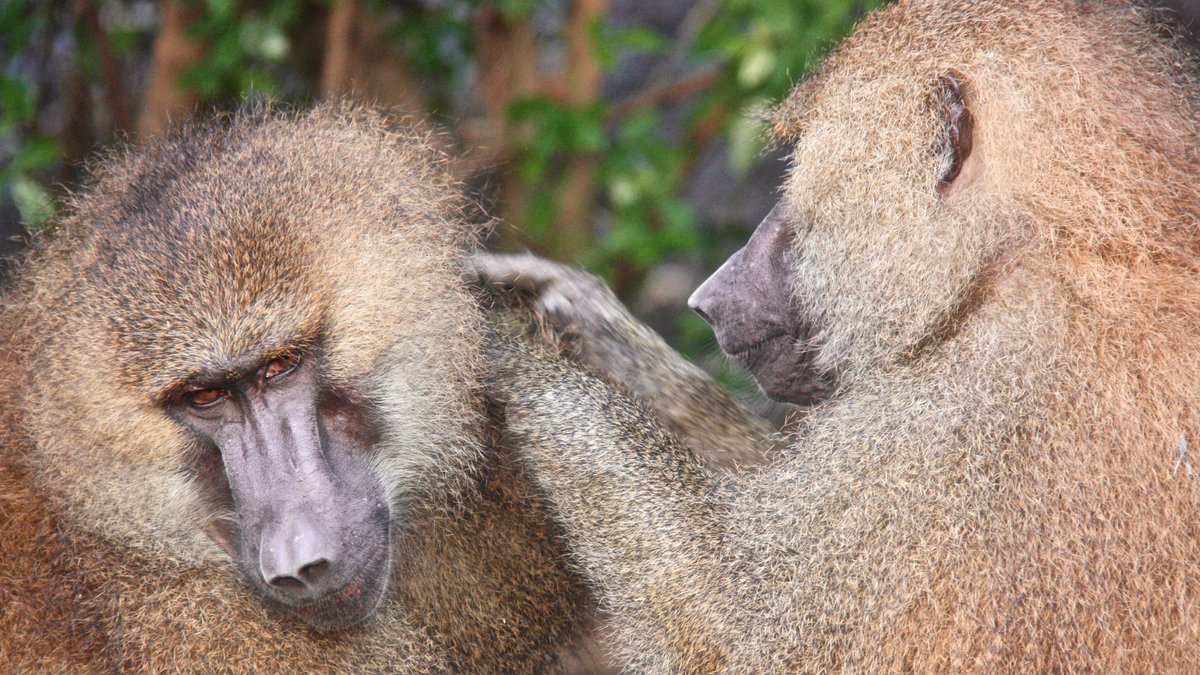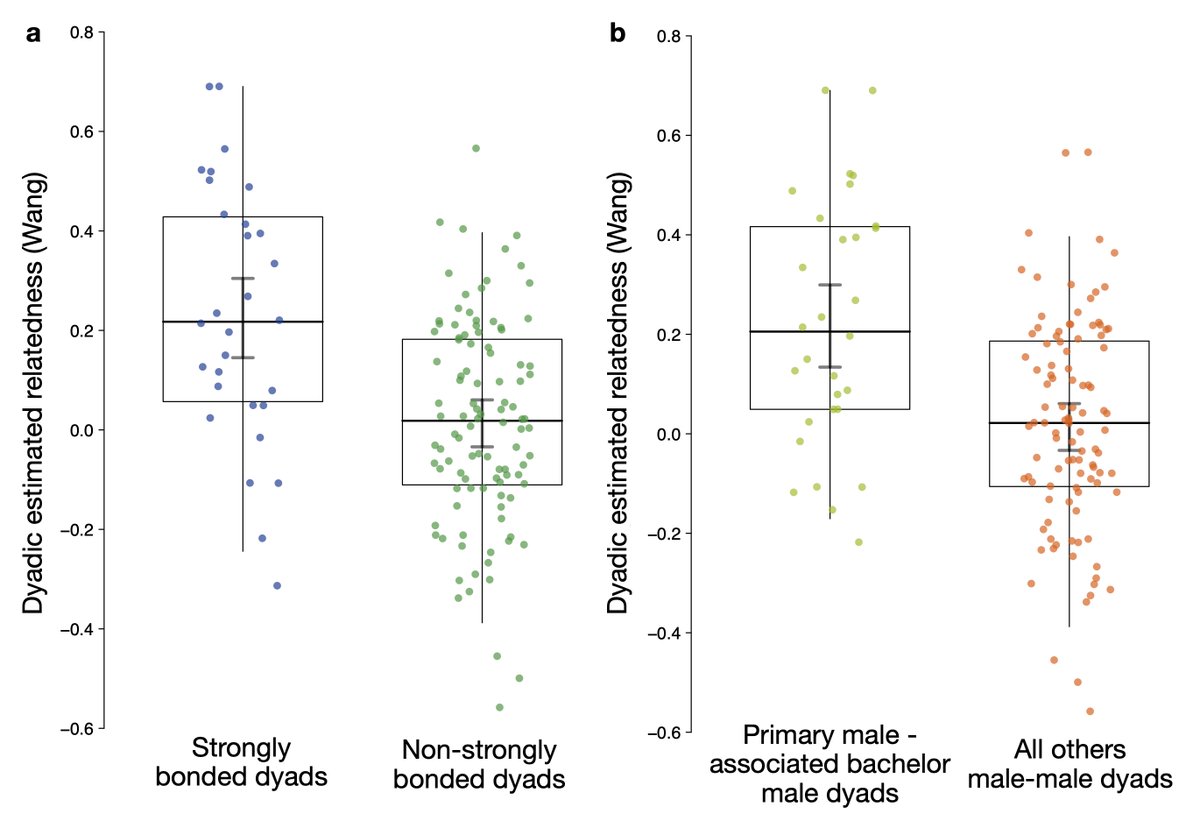Excited to share our new paper “Kin bias and male pair-bond status shape male-male relationships in a multilevel primate society” out in BEAS (with @julxf, Dietmar Zinner, and Franziska Trede) https://link.springer.com/article/10.1007/s00265-020-02960-8
(This time with the correct twitter handle!! )
)
(This time with the correct twitter handle!!
 )
)
We wanted to understand the patterns of male-male affiliative relationships in the multilevel societies of Guinea baboons, how these are linked to relatedness, dominance hierarchy, and male status (primary/bachelor), and to which degree they differ from other multilevel societies
Males maintain “strong bonds”, i.e. differentiated and equitable affiliative relationships that are stable over a 4-year period (likely longer), that occur between dyads of all male status combinations
No all-male groups or “solitary males” were observed. Instead bachelor males are an integral part of the group (“party”) and maintain strong bonds with multiple primary males
No clear male dominance hierarchy could be established, yet bachelor males (generally adolescent or late prime/old adult) tended to be found at the low end of the dominance hierarchy
Lastly, average relatedness being significantly higher between strongly bonded males, and primary and their bachelor males, suggest kin biases contribute to male social preferences
While the link between male status and age / dominance patterns present similarities to other multilevel societies, we found several unique features of male-male bond patterns in Guinea baboons
Check out our manuscript for more details!
Check out our manuscript for more details!


 Read on Twitter
Read on Twitter

